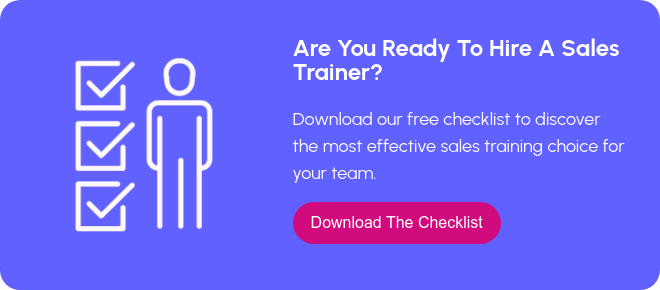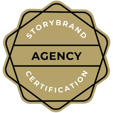Are You Looking and Listening for Quiet Buying Signals?
by Shawn Karol Sandy, on Jul 10, 2016 5:54:30 PM
Recently, I handed over my email address to a sales technology company and, much to my annoyance, my phone number, name of my company, title, and headcount—to download an e-book of “something or other” (it was so memorable, I couldn’t tell you the details of what or why I opted in). The promise of information piqued my interest but the technology solution did not. Shortly thereafter—as in 60 minutes, I got a call from Joe from that very company. He started the conversation like this,
“Hi Shawn, this is Joe from XYZ company. I see you downloaded our e-book on 'something or other' and I wanted to know if you had any questions about our product or we can discuss which pricing plan might be best for your company.”
Whoa, whoa, whoa. Slow your roll, Joe. I just downloaded content. I didn’t express any real interest in your company or product.
It felt like a dating scene gone wrong. I had given him my phone number and he jumped right to setting a date for the wedding!
After I politely explained to Joe that I was really only interested in the content at this time, he kindly offered to walk me through a demo. He’s clearly not listening to me, just going through the steps he’s supposed to hit. I realized, even though I had handed over plenty of prequalifying information, I was going to have do the work here and pre-qualify myself out of this situation.
“Joe, let me just be clear. Is your solution a good fit for sales teams of 20 people or less? Because I’m building sales teams of 10 or less right now.”
To which he replied, "No" which had me shaking my head in wonder. Why would he call me to move to close when I gave them the sales team size of my company? There are a dozen other moves he could have made to test my level of interest, engage me, or bring more value to my experience. What a waste of time and energy – not just on me, but probably dozens of non-qualified leads every day.
This is a big sales fail
Joe’s company has a problem. There’s a giant hole in their sales process.
They have the tools, the opt-in content, and they have the people, but they’re not building and responding correctly to buying signals.
Whether you’re an online software company, a retail store, or a service business, your potential customers are out there sending up signals every day about their intentions. As buyers, we make small, bite-sized decisions, to lower the risk of making a bad choice. We rarely go from phone number to wedding bells in one big jump.
The question is:
Are you Looking, Listening, and Learning all the Buyer Signals?
Or are you hoping for that big red neon sign that says “YES, I’ll BUY!”
In my experience (as a seller and lately, as a buyer), most sellers are overlooking all the small and modest buying signals or trigger events that happen before a prospect is ready to see a proposal or sign the deal.
The events they are looking for are the buyer lurching for the pen to sign, the customer clearing their schedule, or asking, “When can we start?”
How often does that really happen in the business to business sales channel?
Buying signals don’t only mean your prospect is ready to purchase.
These signals, mostly small, are opportunities to be of value and to help your customers make decisions.
So, if not the glowing neon sign, what buying signals should you consider triggers of interest?
23 Meaningful Buying Signals You Should be Listening To and Looking For
Email Signals
1. Opened your email2. Clicked on a link
3. Forwarded your email
4. Responded to email or survey
Social Media Signals
5. Accepted connection request6. Viewed your profile
7. Followed you8. Liked your company page
9. Liked your post
10. Commented on your post/share
11. Endorsed you for a skill
12. Shared your content
13. Responded to a comment
14. Post a question in a forum
Website Signals
15. Shared a link
16. Request for more information
17. Opt-in to newsletter
18. Download a resource (case study, white paper, e-book, guide)
Showing Up
19. Attend an event hosted by your company
20. Attend an industry event (ahem – in your industry)
21. Stop by your booth at a conference
22. Attended your webinar
23. Walked in to ask for information
Even if you’re not an enterprise sized business or the most tech savvy company—you should recognize most of these triggers as moving parts of your sales strategy and selling process. If you’re missing quite a few of these triggers, you probably have big holes in your sales strategy, like Joe from XYZ company.
Take a look at your marketing messages and your sales processes:
Do you have multiple places for your future customers to give you small, low-risk signs that they are considering a solution or a future purchase?
If you do, are you paying attention? Are you closely monitoring those emails, social media, links, downloads, etc. to look, learn, and listen for cues to respond?
Your response to those signals is critical to earning trust and helping your customers make buying decisions. Your response should be defined in your sales playbook, and specific for each intention.
Build Your Sales and Marketing Strategy Around Opportunities for Your Future Customers
Let them explore you, get to know you, gather information, and develop trust.Then look, listen, and learn from your customers and respond to those quiet signals—instead of waiting for those big flashing red signs!
PS – Not sure what to include in your sales process? Let’s evaluate your sales playbook and find those opportunities you’re overlooking. Contact us to talk about your strategy!
.webp?width=12693&height=4513&name=Sauce%20Logo%20Dark%20Ht%20(1).webp)

.webp?width=180&height=64&name=Sauce%20Logo%20Dark%20Ht%20(1).webp)












